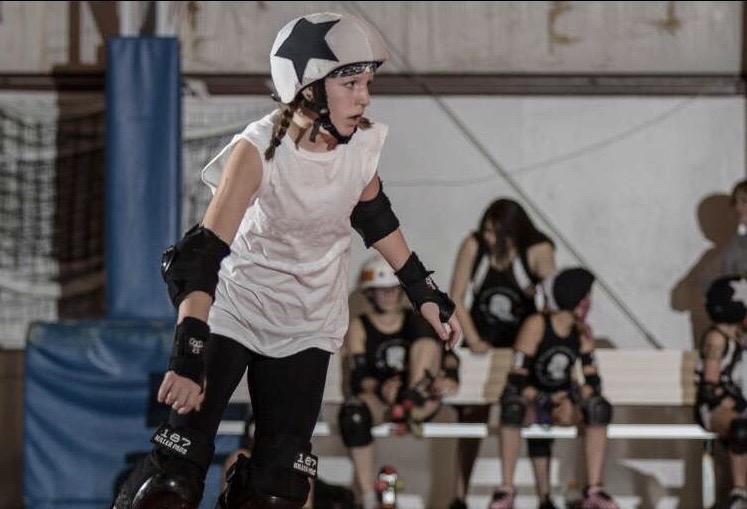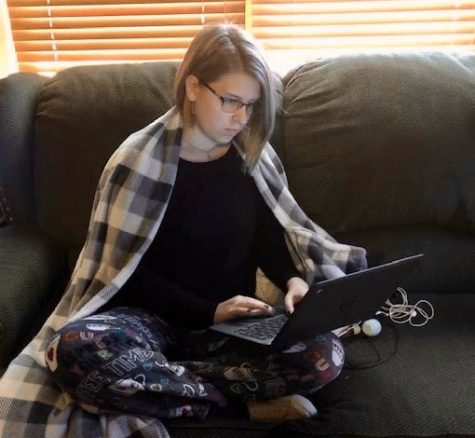Turner participates in a potentially painful sport
Photo courtesy of Amara Turner
Turner races around the track, trying to score points for her team by lapping opponents. She plays jammer and blocker.
Elbow pads, check. Knee pads, check. Mouthguard, check. Helmet, check. Wrist guards, check. Roller skates, check.
As freshman Amara Turner prepares for potential impacts during her roller derby bouts by putting on this protective gear, her mind races, thinking of possible strategies that will help her pass through the other team and lap them around the court.
Roller derby is an unconventional and sometimes dangerous sport, but Turner, who has been competing for three years now, said she loves many aspects of it.
“I do roller derby because I really like the community and the people. I just, in general, enjoy the sport. It makes me excited,” Turner said.
Roller derby matches are called “bouts” and can be played just about anywhere. Typically bouts are held outside, in an auditorium, or on a basketball court. It just depends on when and where the team can find games.
Turner practices Mondays and Wednesdays in the evenings at Kenwood Hall in Salina. Practices last from one to two hours, and roller derby season can last all year long if the team has committed players and available games on hand.
Turner’s mom, Leanne, coaches her team and used to participate in roller derby herself. That is how Turner got into the sport and grew to love it.
One of the positions that Turner enjoys about the sport is “jammer.” Jammers are the offensive players that have the objective of lapping the players on the other team. If a jammer laps the other team, their team scores points.
“Blocking” is her second favorite position. The blocker’s goal is to block the other team from letting the jammer get by them. Both of the teams play offense and defense at the same time.
Many jammers are prone to getting into accidents. Luckily, Turner has not been a part of one, although, throughout her bouts, she has seen others involved in dangerous wrecks.
“Just recently I had a bout where a girl’s kneecap got dislocated and a girl’s ankle bone popped out of her skin,” Turner said.
Even with encountering these bad injuries, Turner would not say that roller derby is a bloody and brutal sport. She believes, though, that players need to be tough and be able to stand their ground.
“I think that you (need to be strong) because you only have a certain amount of time to get back up, and you also need to be strong emotionally. You can not take things personally when someone’s doing their part for their team,” Turner said.
Turner believes that this sport is often mistaken for being a bloody sport and thinks that its reputation is undeserved. She has lots of fun going to practices and participating in the bouts because of how exhilarating the sport can be. Turner hopes she can continue competing in the sport for many years to come.
“I think that many people mistake roller derby for a more violent sport than it is. After engaging in the sport, I realized how fun it can be and I love the community,” Turner said.







